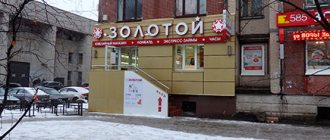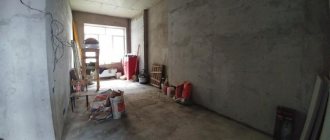The business sector is growing and developing more and more every day, and often there is no longer enough space for it in shopping centers and office buildings. And then residential premises converted into commercial space are used. On the streets of any city you can see how on the ground floors of residential apartment buildings there are shops, workshops, cafes and similar organizations. The same can happen with private houses that were originally residential. But, in order to use part of your own residential private house to open a business outlet, you need to go through a number of complex documentary (and not only) procedures and visit various government bodies to obtain the coveted permission. Such a procedure can last several months, and if some requirements are not met or inconsistencies arise, even longer. Today we will examine in detail the question of how to convert a private residential building into non-residential premises.
According to the law, residential premises cannot be used to conduct business . This applies to both apartments and private houses. But nothing is impossible, and if the owner of a private house decides to use, for example, the first floor or part of it for commercial activities, then to do this it is necessary to remove this part from the residential stock and put it into non-residential use.
Is it possible to transfer an apartment to non-residential premises: legislation
When deciding to transfer residential premises to non-residential premises in St. Petersburg, Moscow and any other city, you need to take into account several laws:
- Ch. 3 Residential Complex of the Russian Federation. Contains the conditions, procedure and grounds for refusing to change the status of housing.
- SP 54.13330.2011. You need to focus on them when remodeling. In the future, the commission will check whether the premises meet the established requirements.
- Decree of the Government of the Russian Federation of April 28, 2005 N 266 “On approval of the application form...”. Contains a unified application form for redevelopment.
- Federal Law “Technical Regulations on Fire Safety Requirements” dated July 22, 2008 N 123-FZ. It must be observed when performing construction work.
Note: regional authorities may issue their own legislation, making changes or additions to the transfer procedure and premises requirements.
Types of residential premises
According to Art. 16 of the Housing Code of the Russian Federation, there are several types of residential premises:
- Private residential buildings and parts of houses.
- Apartments and parts of apartments.
- Rooms.
It is important to take into account that it will not be possible to transfer part of an apartment, house or a separate room to non-residential premises. This is technically impossible, because... all requirements will not be met. Only complete housing that meets all criteria is transferred to non-residential status.
How to convert a garage into residential or non-residential premises?
What is non-residential premises - definition according to the Housing Code of the Russian Federation
How to convert a residential building into an apartment building
We did the land surveying.
Now the tax comes only to us for the entire 18 acres on which the house and the land adjacent to it stands. And what should we do with all this “wealth”? We don’t know? And what is a simple way to remove self-development? This procedure entails the removal of the apartment from the balance sheet of the administration, and it is unknown whether we will register part of the residential building. If we privatize an apartment now, will it be possible to “redo” the documents for part of the residential building later?” In accordance with Art.
When might it be necessary to transfer an apartment to non-residential premises?
Most often, people transfer real estate from residential to non-residential for several reasons:
- Conducting business activities. According to Art. 17 of the Housing Code of the Russian Federation, in the apartment you can engage in tutoring, work as a freelancer, or engage in other professional activities, if this does not violate the rights and interests of neighbors. But it won’t be possible to open an industrial production or a hotel in housing; you need to change the status of the premises to non-residential.
- In the region there is a ban on certain types of business activities in apartments and houses. To deal with them, you need to transfer the housing to non-residential status.
Note! In some regions, it is prohibited to open stores selling alcoholic beverages. It is best to check local legal requirements in advance.
Conditions for transfer to non-residential premises
To transfer a residential building or apartment to non-residential premises, several conditions must be met:
- Obtain the consent of all owners of adjacent housing.
- You cannot change the status of an object for religious activities, regardless of religion.
- Obtain the consent of all owners of the apartment building. It is drawn up based on the results of the meeting.
- It will not be possible to transfer the status to non-residential if the property is used under a social tenancy agreement or belongs to the category of social housing.
- Only the owner, whose rights are confirmed by documents, has the right to execute the transfer.
- It will not be possible to transfer housing if it is under arrest, pledged, or encumbered with other rights of third parties to it.
- If the property was purchased during marriage, the transfer will require the consent of the spouse.
Legal advice: it is better to discuss the issue of transfer with your neighbors in advance before formalizing the documents. A general meeting is necessary in any case, but if there are many opponents, having learned about them before voting, you have a better chance of finding those who will not mind and agreeing that they will definitely come to the meeting.
Where to start?
First of all, prepare documents for re-registration of the premises:
- legal documents (certificates, contracts, court decisions). Their copies must be certified by a notary;
- registration certificate It is made by cadastral engineers;
- plan of all floors of the house. The plan can be obtained from the BTI;
- reconstruction project. It will be required if further reconstruction or redevelopment will be necessary for the use of non-residential premises. It is better to entrust the preparation of the project to an organization that has a license for design activities (which is a member of the SRO of designers);
- if there are several owners of the apartment, then notarized consent is required from each to transfer the apartment to commercial real estate and which of the owners is entrusted with dealing with this issue;
- power of attorney from the owner, if the transfer will be handled by another person;
- if the apartment belongs not to a citizen, but to a legal entity, then its constituent documents are required (copies must be notarized).
Technical requirements for the premises
There are also technical requirements for transferred residential real estate that must also be observed:
- The apartment should be located on the first floor. It is also possible to transfer apartments on the upper floors, but only if all the premises below are non-residential.
- It is necessary to equip a separate entrance. There is no point in doing it before the redevelopment and approval of the transfer; it is better to start arranging it in the process. There must be a direct entrance to the premises; use of the entrance is not allowed.
- The object must be completely isolated.
- You must not create obstacles to the use of common property: staircases, elevators, etc.
- If the building is classified as a cultural heritage site, the redevelopment must be approved through the cultural committee or other institution in the region.
- If the facade is affected during construction work, coordination with the architecture committee is required.
Note! If a residential private house is transferred to non-residential premises, you need to look at the type of permitted use of the land. For example, commercial activities are prohibited on certain categories of land. In this case, you will first have to change the status of the site, and then deal with the premises.
On a note
The status of a house as an apartment building is important for the owners and, as in this case, for the municipality and management organization. If the house is multi-apartment, then questions arise about the method of managing it, carrying out current and major repairs of common property, forming a capital repair fund, recognizing the house as unsafe, and others.
As the courts indicated in the case considered, if a residential building with two or more apartments has common property: a roof, an attic, a basement, a plot of land, communications, then such a building is recognized as an apartment building, regardless of whether the apartments are equipped with exits to common premises.
Transferring residential premises to non-residential premises: step-by-step instructions
To convert a residential apartment to non-residential real estate you need:
- Get a redevelopment project.
- Coordinate changes with neighbors.
- Submit documents to the administration for approval of the redevelopment.
- Carry out construction work.
- Receive an inspection report and a conclusion on the compliance of the premises with the requirements.
- Receive a transfer decision.
- Make adjustments to the Unified State Register.
Let's look at each step in more detail.
Step 1: registration of redevelopment
This means ordering a redevelopment project. It is better to do this before the meeting of the owners of the apartment building, so that people understand what changes are planned to be made. If controversial issues arise, they can be resolved directly at the meeting.
The project is formalized in an organization that has SRO approval. The specialist will need technical documents for housing, as well as access to it. He will examine the premises and then make a design. The document will indicate the planned technical changes, a description of all types of work, the purpose of the redevelopment (change in the status of the facility), and measures to ensure fire safety.
Note: the project production period is indicated in the contract. Usually this is 2-3 weeks.
Step 2: coordination with neighbors
First you need to coordinate the changes with the owners of the adjacent apartments: on the side, above and below. Consent is drawn up in simple written form. After this, everything is agreed upon with the other homeowners in the apartment building at a meeting.
What should be done:
- Notify apartment owners of the upcoming meeting, indicating the agenda. Notifications are sent no later than 14 days before the scheduled date. You can obtain information about all owners by ordering an extract from the Unified State Register for an apartment building in Rosreestr. It will be done in 3-4 days, it costs 350 rubles.
- To hold a meeting. At least 50% of the owners must be present. You can also involve the HOA. At the meeting, the agenda is announced and the redevelopment project is shown.
- Conduct a vote and, based on the results, draw up a protocol indicating all participants in the meeting.
- Prepare a participant registration sheet and protocol. These documents will be needed at the next stage.
Note! The meeting can be held in absentia. But to do this, the owner of the transferred premises will have to visit all the residents and personally answer all questions about the agenda. To attract more allies, it is worth explaining to people why opening a commercial organization in their home is beneficial. If possible, the owner of the premises can “appease” the other owners by promising to improve the yard area.
Step 3: submitting documents to the administration
To transfer residential premises to non-residential premises, the following documents must be submitted to the administration:
- application for transfer;
- application for redevelopment;
- owner's passport;
- MKD floor plan;
- extract from the Unified State Register of Real Estate;
- floor plan;
- redevelopment project;
- technical report on the condition of load-bearing walls;
- written consent of the owners of adjacent premises;
- minutes of the general meeting of owners;
- extract from the Unified State Register of Real Estate.
Legal advice: the administration may additionally request a registration certificate and documents on the basis of which ownership rights are registered (sale and purchase agreement, exchange, donation, etc.). It's better to introduce them right away.
Contents and sample application for redevelopment
The application is filled out in the prescribed form. What information does it contain:
- The name of the local government body to which it is submitted.
- Full name, address, passport details of the owner-applicant.
- Residential address.
- Request for permission to redevelop according to the attached project.
- Full name, notes on the consent of the remaining owners.
- List of attached documents.
- Date of compilation and signature.
Contents and sample application for transfer of residential premises to non-residential premises
This application contains the same information as in the one presented above, only instead of a request for approval of redevelopment, you need to write that it is necessary to change the status of the object to non-residential.
Sample application
Step 4: Get the solution
Submitted documents are reviewed by the administration for no more than 45 calendar days. During this time, the redevelopment must be agreed upon, a decision or resolution must be drawn up to change the status of the object to non-residential.
Note! The decision of the head of administration is sent to the owner within three days.
Step 4: redevelopment
If the administration has agreed to the redevelopment, construction work can begin. The agreement must be concluded with an organization that has SRO approval. It is important that the work is carried out in accordance with the project, otherwise it will not be accepted.
Step 5: inspection of the premises and receipt of the certificate
When the work is completed, you need to submit a notification to the administration. A commission consisting of employees of the housing department, the Ministry of Emergency Situations, architecture and other departments will check whether the premises meet the established requirements. If there are any shortcomings, they will be given several days to eliminate them. If everything is in order, an acceptance certificate is issued.
Step 6: ordering a technical plan
After signing the acceptance certificate, you need to order a new technical plan from a cadastral engineer with SRO approval. He will inspect the premises and draw up a document containing the main characteristics of the property after redevelopment.
Step 7: making changes to the Unified State Register
All changes must be reflected in the Unified State Register. You need to submit an application directly to Rosreestr or through the MFC; in some regions, an application through State Services is available.
Along with the application, a passport, a resolution on the transfer of the object’s status, an acceptance certificate and a technical plan are submitted.
Note: changes will be made within 5-7 days. As a result, the owner will be given an extract from the Unified State Register of Real Estate, where the premises will already be listed as non-residential.
Transfer of an individual housing construction site into an apartment building and low-rise construction
After receiving the specified application, the local administration makes a request for information about the applicant, which is contained in the Unified State Register of Legal Entities or the Unified State Register of Individual Entrepreneurs. For this purpose, a unified system of interdepartmental electronic interaction of the federal executive body is used, which carries out state registration of legal entities and individuals as individual entrepreneurs. An individual or legal entity has the right to provide this information independently.
The decision to change the temporary residence permit to an apartment building or multi-apartment housing complex is made by the head of the local administration (Part 1, Article 4 N 191-FZ). However, it is worth considering that if the purpose of the site changes, then a public hearing will need to be held before making a decision. Otherwise, there is no need to carry them out. It is to the local administration that the appropriate package of documents must be submitted.
How much does it cost to remove an apartment from the housing stock?
The cost of converting residential real estate to commercial consists of the costs of several documents:
- Notarized consent of all owners, if the housing is in shared ownership - from 1,000 rubles. for one document.
- Extract from the Unified State Register – 350 rubles, if ordered electronically on the Rosreestr website.
- Technical plan – from 5,000 rub.
- Redevelopment project – from 15,000 rub.
Note: there are also organizational costs for holding a general meeting. For example, printing notifications and sending letters by Russian Post costs on average 5,000 rubles. It is also necessary to take into account the costs of the redevelopment itself; they depend on the type of changes made, the list of works and the total area of the room.
What to do if the transfer of housing stock to non-residential property is refused?
According to Art. 24 of the Housing Code of the Russian Federation, a change in the status of a property may be refused for several reasons:
- Inconsistency of the redevelopment project with the established requirements.
- Failure to submit documents to the administration within the established time limits.
- Submission of an incomplete set of documents.
- Presence of restrictions: bail, arrest.
- Changes in project documentation after a meeting of homeowners in the apartment building.
- Violations of the procedure for holding a general meeting.
- The project specifies work that involves reconstruction: adding an additional room, replacing load-bearing structures.
The refusal is issued in writing and issued to the owner no later than 45 calendar days from the date of registration of the application. It can only be appealed in court.
Legal advice: in order not to go to court, it is easier to take into account the comments in the refusal, eliminate them, and then resubmit the documents. This is not prohibited by law. But if the refusal is not justified, you will have to file an administrative claim. If the court satisfies the requirements, the administration’s decision will be canceled and the residential premises will be transferred to non-residential premises based on the decision.
How to convert a residential building into an apartment building
Clause 3 art. 28 of the Federal Law on Privatization does not allow refusal of citizens to purchase land, except in cases specified by law. Lands that are of particular importance to the interests and security of the state are not subject to privatization. There is another option - to allow the department to conduct raids on facilities.
But recently, the first floor in new buildings has begun to be made non-residential - social facilities (kindergarten, clinic), commercial premises (shop, pharmacy, cafe, dry cleaner, office), garages. Pros: – convenience. For older people and people with disabilities, for young mothers with small children.
Arbitrage practice
Typically, the administration refuses to transfer housing from residential to non-residential due to the lack of consent of the owners of adjacent premises or the failure to hold a general meeting, or if the redevelopment project does not meet the established requirements.
Here are some examples of decisions in cases challenging administration refusals:
- Decision No. 2A-937/2020 2A-937/2020~M-475/2020 M-475/2020 dated February 28, 2021 in case No. 2A-937/2020. As a result, the court granted the claim, declaring the refusal illegal. The defendant (administration) was obliged to make a decision to transfer the premises to non-residential status and to issue an acceptance committee report on the completion of the redevelopment.
- Decision No. 2A-2855/2019 2A-437/2020 dated February 27, 2021 in case No. 2A-1766/2019~M-1283/2019. The demands were rejected in full.
- Decision No. 2A-102/2020 2A-102/2020~M-27/2020 M-27/2020 dated February 20, 2021 in case No. 2A-102/2020. The administration refused the transfer due to the lack of parking spaces, because... The plaintiff planned to use the premises to open a store. The claims were denied.
Lawyer's answers to private questions
I ordered and paid for the redevelopment project, it cost me 30,000 rubles. After this, I organized a meeting of owners, they opposed the transfer of my apartment to the status of non-residential premises. Is it possible to recover expenses from them?
No. Changing the status of a property is the desire of the owner himself. Other owners may be against it, and are not required to reimburse expenses prior to the meeting.
I did the remodeling myself. Now I want to order a project to transfer the apartment to non-residential status. Is it possible to do this?
No. First, a redevelopment project is ordered, then construction work is carried out. Responsibility for illegal redevelopment is provided for under Art. 7.21 of the Code of Administrative Offenses of the Russian Federation, they can be fined up to 2,500 rubles. In addition, on the basis of Art. 29 of the Housing Code of the Russian Federation, the administration has the right to oblige the owner to return the premises to its original condition. But the owner can legalize the changes through the court, and then, based on the decision, the property will be preserved in its redesigned state.
Is it necessary to assign a new number to an apartment after transferring it from residential to non-residential?
No, apartment numbers are assigned once.
Is it possible to convert non-residential premises into apartments?
Apartments are already considered non-residential; they are commercial real estate.
I want to take out a mortgage and buy an apartment on the ground floor in order to open a store in the future. What is the best way to do it: buy a non-residential property right away, or first take a residential one and then convert it to a commercial one?
It is unlikely that a mortgage will be given for non-residential real estate. If you can’t do without it, it’s better to first take a residential apartment, pay off the debt to the bank and transfer it to a non-residential fund. Until the debt is repaid, the object will be pledged to the creditor, and he will most likely not agree to change the purpose of the premises.
Apartment owners have common property
GZHI filed an appeal, pointing out that the land plot, although it belongs to the common property of the apartment building, is not a common premises. Therefore, the presence of such a plot cannot be a sign that the house is an apartment building. A residential building consisting of two apartments with separate exits to a land plot without direct access to common areas is not multi-apartment. The disputed house has the characteristics of a residential building of a blocked development in accordance with Art. 49 Civil Code of the Russian Federation.
The Court of Appeal, repeating the arguments of its colleagues and fully agreeing with them, also added that
- The disputed building is recognized as an apartment building due to the presence of common property in it: a single roof and a single solid facade, a common foundation, one plot of land, and intra-building utilities for energy supply.
- The presence of common property entails the possibility of managing it by a specialized organization.
- The technical passport of the house indicates the presence of attic floors; accordingly, the house has an attic, which is a room intended to serve more than one apartment, and is part of the common property of the owners of the premises.
The Court of Appeal confirmed the legality of recognizing the building as an apartment building and, therefore, the illegality of the refusal of the State Housing Authority to make changes to the register of licenses according to the application of the management organization. The dispute moved to the cassation court, which completely agreed with the previous decisions. The Supreme Court of the Russian Federation, to which the State Housing Inspectorate appealed, refused to consider the complaint, having found no grounds for this.
As a result, the house was recognized as an apartment building, and the State Housing Authority was obliged to make changes to the register of licenses of the region in accordance with the results of an open competition for the selection of management entities.
On the extension of the contract with the management company, concluded based on the results of an open competition
77361







